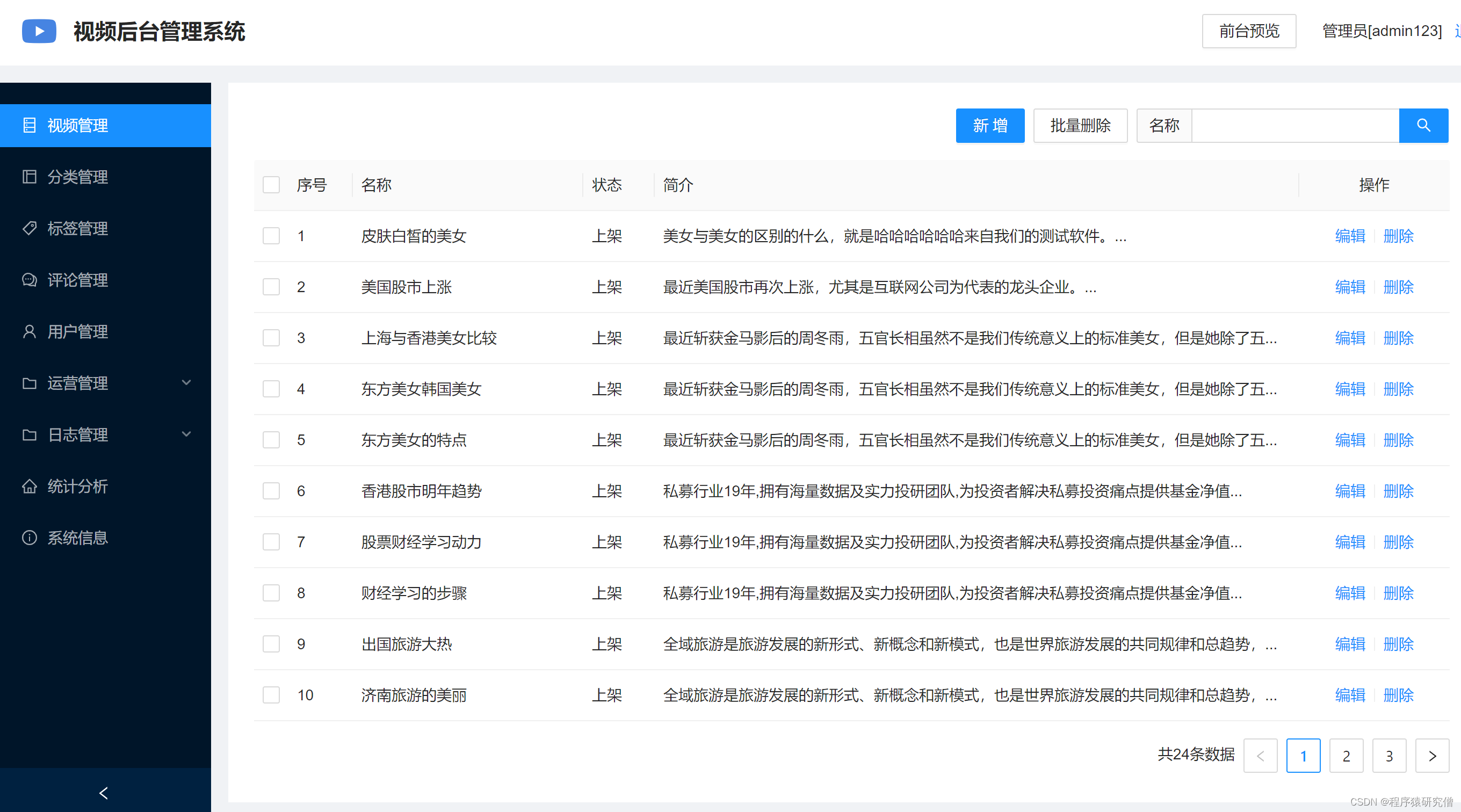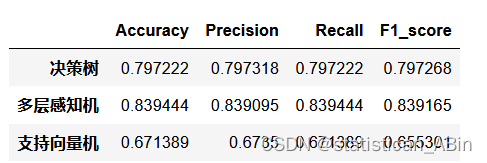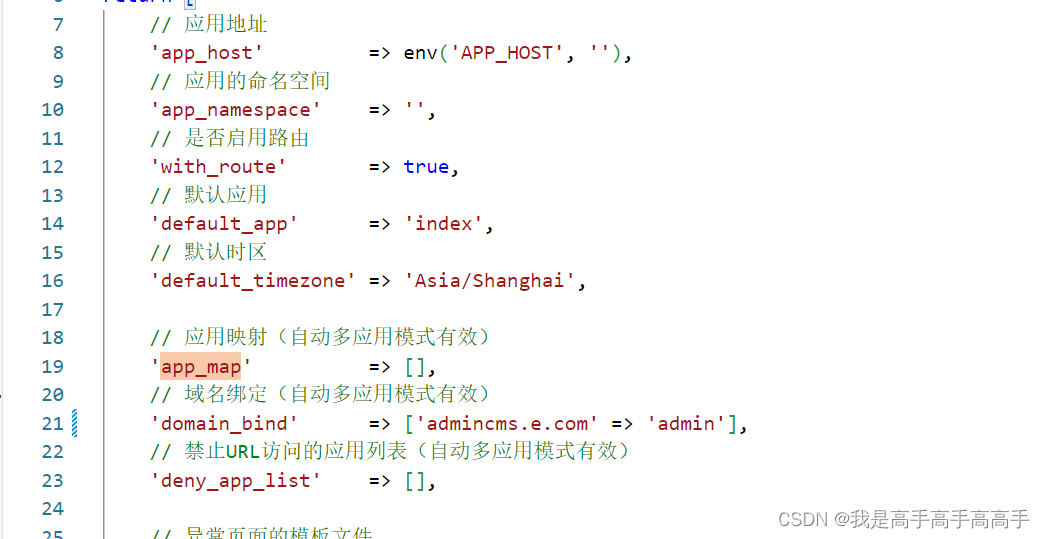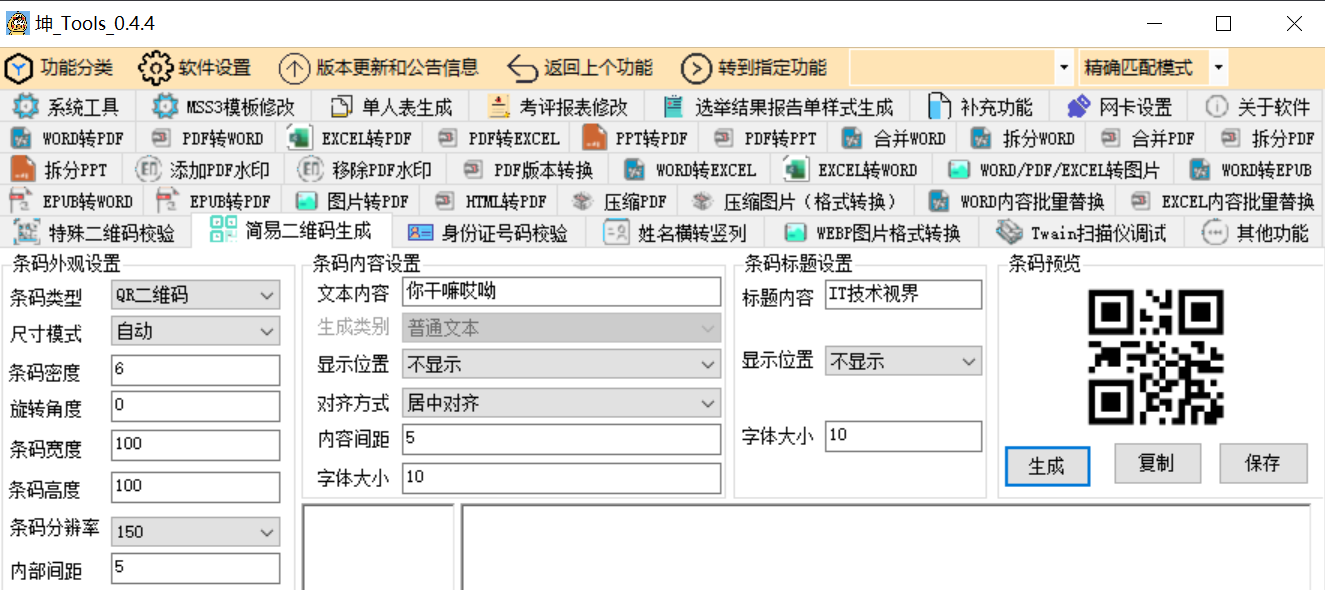ExecuteScript 组件的基本使用
前面已经介绍过Nifi中基本的数据流程,这里介绍一下最为常用的一个组件,ExecuteScript processor,顾名思义ExecuteScript组件是一组以自定义脚本为主体的组件,意思就是,可以在该组件内部进行脚本语言编写,以此来完成数据的处理,相较于其他固定的Process组件的预设操作和要求,脚本更为便捷和自由。

通过组件商城搜索ExecuteScript可以搜索到相关的脚本组件,这里Nifi内置了多种脚本语言的支持,包括python、js、groovy等,打开组件后,SETTING和SCHEDULING配置就不用多说了,通用组件的配置,直接打开特有的PROPERTIES配置页签,可以看到如上图中的几个配置项。
- Script File : 这里可以通过文件路径,直接加载脚本文件读取,和Script Body 配置二选一即可
- Script Body:实时脚本代码,可以直接在此处编写相应的脚本语言
- Failure Strategy:这里是当脚本中出现异常或错误时,数据的流出,一般选择transfer to failure即可
- Additional classpath: 如果编写脚本过程中脚本需要依赖别的类库,则这里需要指定jar包(以groovy为例)
- 最后一个SQL.masql为个人自定义的参数,可以在脚本中使用,后续说到Controller Service时会介绍,这里不过多解释
ExecuteScript 组件的脚本编写
看过了具体的组件,实际使用中是直接在ScriptBody中进行脚本语言编写,ExecuteScript进行脚本编程之前,需要先熟悉一些概念。
session: 是对processor的ProcessSession属性的引用。session允许在 flow files 执行下面的操作: create(), putAttribute(), transfer(), 像 read() 和 write()一样。
context: 是对 ProcessContext 的引用。可以用于检索 processor 的属性, 关系, Controller Services, 和 StateManager。
log: 是对ComponentLog的引用。用于 log 消息到 NiFi系统, 如 log.info('Hello world!')。
REL_SUCCESS: 这是对 "success" relationship 的引用。这是从父类 (ExecuteScript)的静态变量基础来的, 但是一些引擎(如 Lua)不允许引用静态成员, 只是一个为了方便的变量。
REL_FAILURE: 这是对 "failure" relationship 的引用。与 REL_SUCCESS 一样, 这是从父类 (ExecuteScript)的静态变量基础来的, 但是一些引擎(如 Lua)不允许引用静态成员, 只是一个为了方便的变量。
Dynamic Properties: 任何在ExecuteScript定义的动态属性都作为变量集合到 PropertyValue 对象,对应于dynamic property。允许获得property的 String 值 , 通过NiFi表达式进行求值,获得相应的类型 (如 Boolean, 等等)。 因为动态属性名称成为脚本里的变量名, 你需要了解所选的脚本引擎的变量命名属性。 例如, Groovy 不允许变量名中提供 (.) , 所以,如果 "my.property"作为动态属性将会报错。
与这些变量名的交互通过 NiFi Java API进行, 下面的每一个案例将讨论相应的API调用。 下面的案例执行不同的函数操作 flow files, 如 reading/writing 属性, 转换为 relationship, logging, 等等。需要注意,这里的例子只是一些片段。举例来说, 如果使用session.get()从队列中获取 flow file , 必须转换为 relationship 或者移除, 否则将会引发错误。代码片段应该是平面化的而且保持清晰,没有容易引起混乱的代码,仅用于演示概念,从而让工作简单。
读取管道中数据(flow file)

进行脚本编写处理数据第一步就是需要从前置管道中获取数据到ExecuteScript组件中。
从session中获得flow file
数据进入管道后,如何对接组件为ExecuteScript,则数据是以Flow File的形式存在,获取数据就是获取Flow File。
需求:从队列中获得输入flow file,执行 ExecuteScript 并进行处理。
方法:使用 session对象的get(). 该方法返回FlowFile,是下一个最高优先级的FlowFile用于处理. 如果没有 FlowFile 用于处理, 该方法将返回 null. 注意, 如果一个持续的FlowFiles流进入processor,也可能会返回null. 这在多个并发任务处理时会发生,此时其他任务已获得了 FlowFiles. 如果脚本要求有一个 FlowFile才能继续处理, 如果是session.get()得到null应该立即返回。
例子:
Groovy:
flowFile = session.get()
if(!flowFile) returnJython:
flowFile = session.get()
if (flowFile != None):Javascript:
var flowFile = session.get();
if (flowFile != null) {
// All processing code goes here
}JRuby:
flowFile = session.get()
if flowFile != nil
# All processing code goes here
end得到多个 flow files
需求:从queue(s)获得多个flow files用于ExecuteScript处理
方法:使用session对象的get(maxResults) 方法. 该方法从工作队列中返回最多 maxResults 个FlowFiles . 如果没有 FlowFiles 可用, 一个空的list 将被返回 (而不是返回 null).。
例子:
Groovy:
flowFileList = session.get(100)
if(!flowFileList.isEmpty()) {
flowFileList.each { flowFile ->
// Process each FlowFile here
}
}Jython:
flowFileList = session.get(100)
if not flowFileList.isEmpty():
for flowFile in flowFileList:
# Process each FlowFile hereJavascript:
flowFileList = session.get(100)
if(!flowFileList.isEmpty()) {
for each (var flowFile in flowFileList) {
// Process each FlowFile here
}
}JRuby:
flowFileList = session.get(100)
if !(flowFileList.isEmpty())
flowFileList.each { |flowFile|
# Process each FlowFile here}
end创建一个新的 flow files
创建新Flow Files
需求:创建一个新的 FlowFile 发送到下一步的 processor
方法:使用session的 create() 方法. 该方法返回 FlowFile 对象, 以用于后续的处理操作。
例子:
Groovy:
flowFile = session.create()
// Additional processing hereJython:
flowFile = session.create()
# Additional processing hereJavascript:
var flowFile = session.create();
// Additional processing hereJRuby:
flowFile = session.create()
# Additional processing here从父级FlowFile创建新的 FlowFile
需求:从已有的 FlowFile 创建新的flow file 发送到下一步的 processor
方法:使用session的 create(parentFlowFile) 方法,该方法获得父级 FlowFile 的引用,然后返回新的派生 FlowFile 对象。新创建的 FlowFile 除UUID之外将继承父级的所有属性,同时该方法将自动创建一个 起源 FORK 事件或 起源 JOIN 事件,在 ProcessSession被提交的时候,取决于FlowFiles 是否从同一个parent创建。
例子:
Groovy:
flowFile = session.get()
if(!flowFile) return
newFlowFile = session.create(flowFile)
// Additional processing hereJython:
flowFile = session.get()
if (flowFile != None):
newFlowFile = session.create(flowFile)
# Additional processing hereJavascript:
var flowFile = session.get();
if (flowFile != null) {
var newFlowFile = session.create(flowFile);
// Additional processing here
}JRuby:
flowFile = session.get()
if flowFile != nil
newFlowFile = session.create(flowFile)
# Additional processing here
endflow file 的attributes操作
从 flow file 得到属性
需求:获得flow file 的属性。
方法:使用FlowFile对象getAttribute(attributeKey) 。 该方法对于给定的attributeKey返回一个字符串值 , 如果没有找到相应的key就返回null. 下面的例子演示返回FlowFile的 "filename" 属性。
例子:
Groovy:
flowFile = session.get()
if(!flowFile) return
myAttr = flowFile.getAttribute('filename')Jython:
flowFile = session.get()
if (flowFile != None):
myAttr = flowFile.getAttribute('filename')
# implicit return at the endJavascript:
var flowFile = session.get()
if (flowFile != null) {
var myAttr = flowFile.getAttribute('filename')
}JRuby:
flowFile = session.get()
if flowFile != nil
myAttr = flowFile.getAttribute('filename')
end添加属性到 flow file
需求:在已有的 flow file 上添加自己的属性。
方法:使用session对象的 putAttribute(flowFile, attributeKey, attributeValue) 方法。 该方法更新给定的 FlowFile's 属性,使用给出的 key/value 对来进行。
注意:对象的 "uuid" 属性是固定的,并且不能修改; 如果key被命名为 "uuid", 将被忽略.
这里的FlowFile 对象是不可改变的; 这意味着,如果通过API更新了 FlowFile 的属性 (或其它的改变了) , 你将得到一个新版的FlowFile的新的引用。当转换FlowFiles到relationships时这是非常重要的。你必须保持对FlowFile的最新版本的引用, 你必须转换或者移除所有的FlowFiles的最后版本, 否则执行时将会得到错误信息。经常情况下, 该用于存储 FlowFile 引用变量将会被最后返回的版本覆盖 (中间的 FlowFile 应用将会被自动抛弃). 在这个例子中,你可以看到当添加属性时重用flowFile引用的技术。注意到当前的flowFile引用被传递给putAttribute() 方法. 这个结果FlowFile具有命名为 'myAttr'值为 'myValue'的属性。如果你有一个对象,可以序列化为String. 最终, 请注意如果你添加了多个属性, 最好创建一个Map,然后使用 putAllAttributes() 方法来进行赋值。
例子:
Groovy:
flowFile = session.get()
if(!flowFile) return
flowFile = session.putAttribute(flowFile, 'myAttr', 'myValue')Jython:
flowFile = session.get()
if (flowFile != None):
flowFile = session.putAttribute(flowFile, 'myAttr', 'myValue')
# implicit return at the endJavascript:
var flowFile = session.get();
if (flowFile != null) {
flowFile = session.putAttribute(flowFile, 'myAttr', 'myValue')
}JRuby:
flowFile = session.get()
if flowFile != nil
flowFile = session.putAttribute(flowFile, 'myAttr', 'myValue')
end添加多个属性到一个flow file
需求:向 flow file 添加多个自定义属性。。
方法:使用 session对象的putAllAttributes(flowFile, attributeMap) 方法。该方法更新给定的FlowFile's 属性,以 key/value 对的方式存储在Map中返回。
注意:对象的 "uuid" 属性是固定的,并且不能修改; 如果key被命名为 "uuid", 将被忽略.
该技术创建了一个 Map (aka dictionary in Jython, hash in JRuby) 用于更新,然后调用putAllAttributes() 。这比对putAttribute() 对每一个 key/value 遍历效率更高, 这将导致对每一个属性调用时 FlowFile 都需要创建一个副本 (查看上面 FlowFile 不变性的讨论)。下面例子中的Map包含两个条目: myAttr1 和 myAttr2, 设为 '1' 并且第二个为 String (附着到方法签名,对key和value都要求 String)。 注意到session.transfer() 在这里并未指定 (因此下面的代码片段并不能工作), 查看下面的方法。
例子:
Groovy:
attrMap = ['myAttr1': '1', 'myAttr2': Integer.toString(2)]
flowFile = session.get()
if(!flowFile) return
flowFile = session.putAllAttributes(flowFile, attrMap)Jython:
attrMap = {'myAttr1':'1', 'myAttr2':str(2)}
flowFile = session.get()
if (flowFile != None):
flowFile = session.putAllAttributes(flowFile, attrMap)
# implicit return at the endJavascript:
var number2 = 2;
var attrMap = {'myAttr1':'1', 'myAttr2': number2.toString()}
var flowFile = session.get()
if (flowFile != null) {
flowFile = session.putAllAttributes(flowFile, attrMap)
}JRuby:
attrMap = {'myAttr1' => '1', 'myAttr2' => 2.to_s}
flowFile = session.get()
if flowFile != nil
flowFile = session.putAllAttributes(flowFile, attrMap)
end转换 flow file
转移一个flow file 到 relationship
需求:在处理完flow file (new or incoming)之后, 你希望将flow file转移到 relationship ("success" or "failure"). 在这个简单的例子中,让我们假定有一个变量叫做 "errorOccurred", 用于指示在哪种 relationship下 FlowFile 将被转移。
方法:使用session对象的transfer(flowFile, relationship) 方法。基于给定的relationship,该方法将给定的FlowFile发送到适合的目标处理器队列。如果relationship通向不止一个目标,FlowFile的状态将被复制 ,从而每一个目标都将收到一个 FlowFile的拷贝,因此也将具有唯一的标识符UUID。
注意:最后,ExecuteScript将执行session.commit() 以进行操作的提交。你不需要在脚本内部执行session.commit() 来执行提交操作。
例子:
Groovy:
flowFile = session.get()
if(!flowFile) return
// Processing occurs here
if(errorOccurred) {
session.transfer(flowFile, REL_FAILURE)
}
else {
session.transfer(flowFile, REL_SUCCESS)
}Jython:
flowFile = session.get()
if (flowFile != None):
# All processing code starts at this indent
if errorOccurred:
session.transfer(flowFile, REL_FAILURE)
else:
session.transfer(flowFile, REL_SUCCESS)
# implicit return at the endJavascript:
var flowFile = session.get();
if (flowFile != null) {
// All processing code goes here
if(errorOccurred) {
session.transfer(flowFile, REL_FAILURE)
}
else {
session.transfer(flowFile, REL_SUCCESS)
}
}JRuby:
flowFile = session.get()
if flowFile != nil
# All processing code goes here
if errorOccurred
session.transfer(flowFile, REL_FAILURE)
else
session.transfer(flowFile, REL_SUCCESS)
end
end日志 Logging

发送消息到 log并制定日志级别
需求:希望报告一些事件、消息并通过日志框架写入。
方法: 使用 log 的方法(), trace(), debug(), info(), 或 error() 完成。这些方法可以是单个的字符串或者字符串数组对象, 或字符串后面跟着Throwable的对象数组。第一个用于简单消息. 第二个用于一些动态对象(值)的log。在消息字符串中使用 "{}" 进行引用。这些用于对对象数组进行求值,当消息读到 "Found these things: {} {} {}" 并且 Object array 是 ['Hello',1,true], 那么logged 消息将是 "Found these things: Hello 1 true",第三种logging方法带一个 Throwable 参数, 这在例外被捕捉到并且希望日志记录时使用。
例子:
Groovy:
log.info('Found these things: {} {} {}', ['Hello',1,true] as Object[])Jython:
from java.lang import Object
from jarray import array
objArray = ['Hello',1,True]
javaArray = array(objArray, Object)
log.info('Found these things: {} {} {}', javaArray)Javascript:
var ObjectArrayType = Java.type("java.lang.Object[]");
var objArray = new ObjectArrayType(3);
objArray[0] = 'Hello';
objArray[1] = 1;
objArray[2] = true;
log.info('Found these things: {} {} {}', objArray)JRuby:
log.info('Found these things: {} {} {}', ['Hello',1,true].to_java)


















